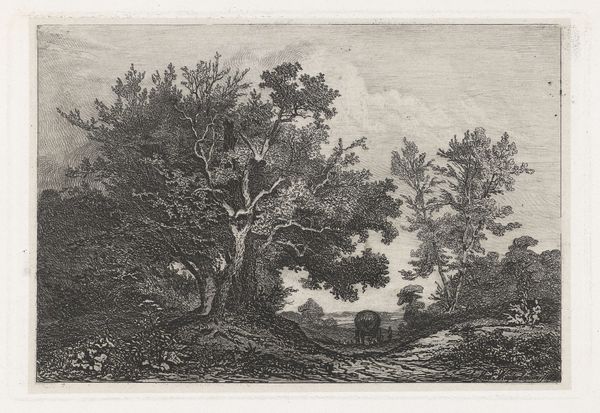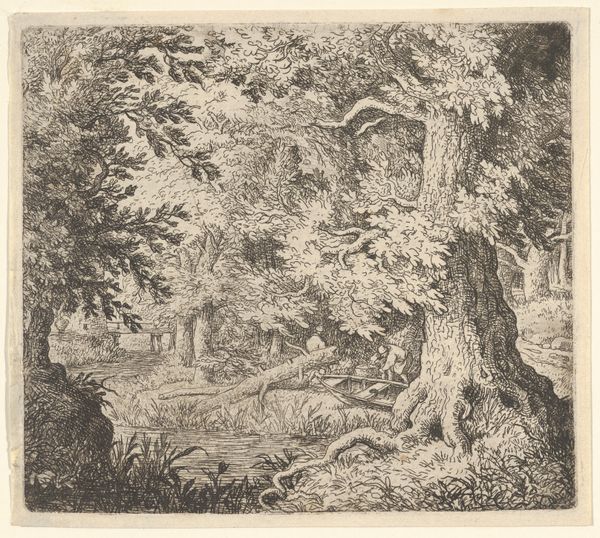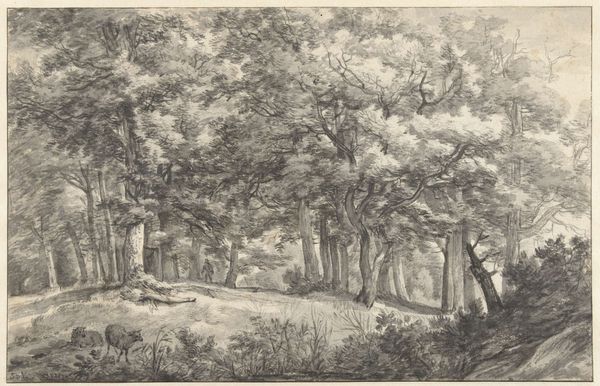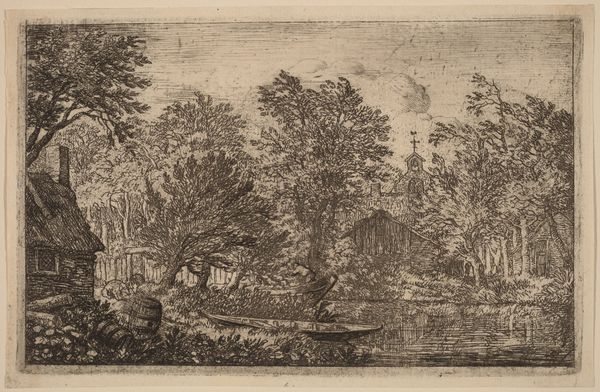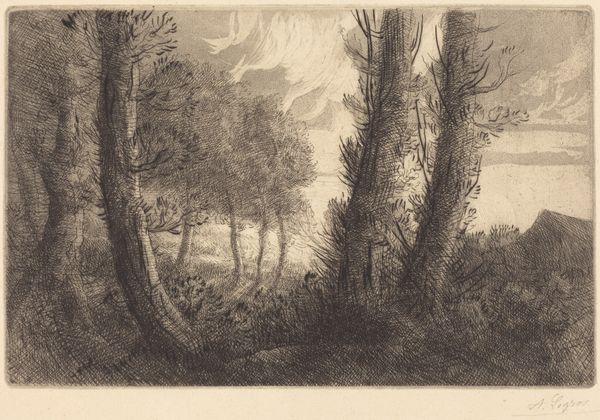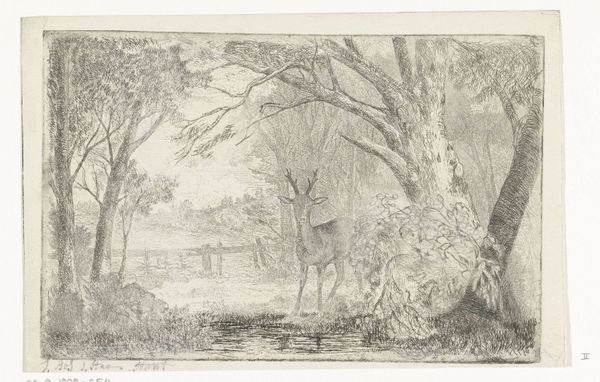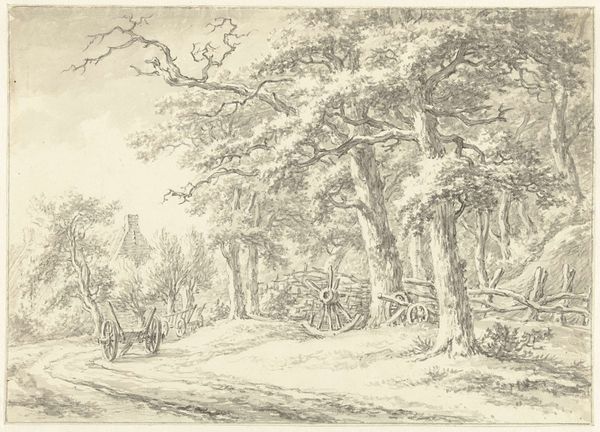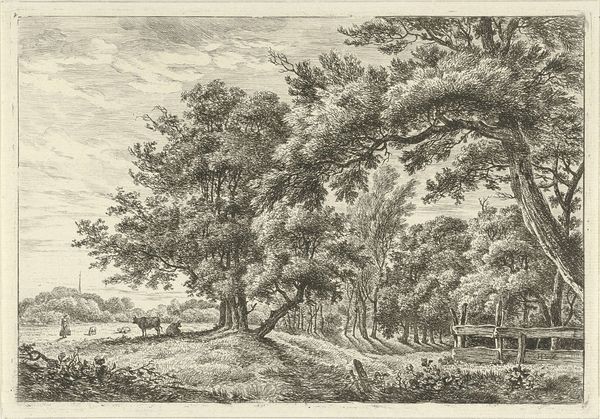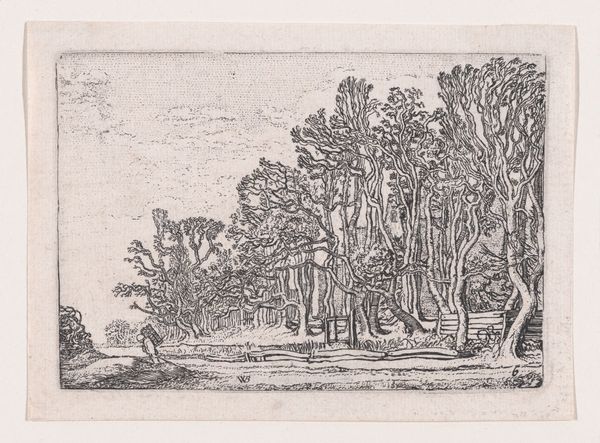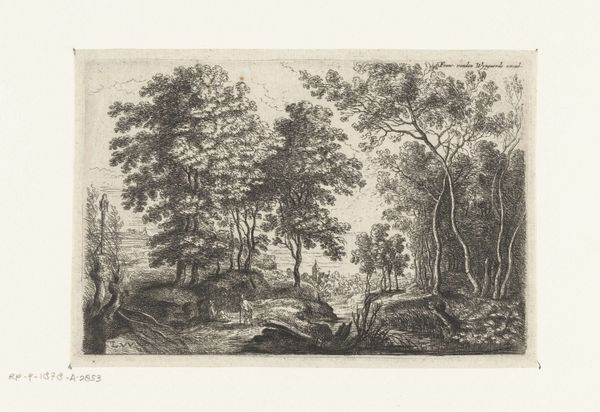
etching
#
impressionism
#
etching
#
landscape
#
etching
#
realism
Dimensions: height 195 mm, width 290 mm
Copyright: Rijks Museum: Open Domain
Editor: So, this is Jan Bos Wz.'s "Boslandschap met vijf schapen," or "Wooded Landscape with Five Sheep," an etching from 1889 held at the Rijksmuseum. It has a very tranquil and somewhat gloomy mood because it's black and white and presents this scenery in detail, which leads me to think... what am I supposed to observe here? Curator: Look at how Bos renders this scene, an image produced using acid to incise the lines into a metal plate, creating a repeatable image. Doesn't the very process speak to a shift in how we engage with nature itself? The forest becomes something to be replicated, consumed even, through printmaking. Editor: That's interesting. So, the act of creating the etching, with its reproducible nature, influences our understanding, more than the depicted nature itself? Curator: Precisely. Think about it. What does this ease of replication imply about access, ownership, and even the value we assign to untouched nature versus represented nature? What labor goes into the animal upkeep in the woods by laymen, as opposed to this artist replicating them in this artform? Editor: Hmmm… now I'm looking at how each tiny stroke and dot of ink becomes part of this system where nature isn't just experienced, but manufactured, reproduced, and distributed almost like another factory. The choice of the etching medium now becomes more important than the landscape depicted. Curator: Exactly. The image now embodies an accessible manufactured artwork of nature! Editor: This changes the entire view on landscapes I previously held. Curator: Indeed! Shifting our attention to how a work is made, changes what a work *means*.
Comments
No comments
Be the first to comment and join the conversation on the ultimate creative platform.

